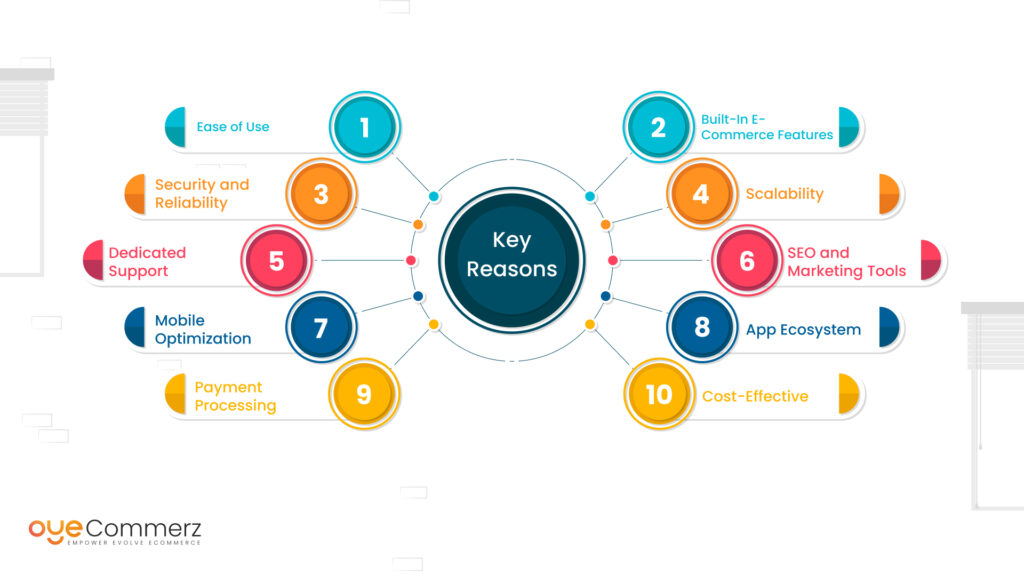Transitioning from WP to Shopify marks an promising step toward streamlining your online store processes. As companies grow, selecting a solution that supports growth potential, UX, and flexibility is essential. Shopify is widely recognized as a favorite for e-commerce professionals, providing superior adaptability, security, and user-friendliness. In this guide, we will delve into the transformative impact of this migration, highlight the benefits, and share practical tips to ensure a seamless move.
1. Why Migrate from WordPress to Shopify?
The combination of WordPress and WooCommerce, continues to support countless e-commerce platforms. However, as businesses scale, issues like plugin dependency, data risks, and complex setups often obstruct progress. Shopify, designed explicitly for e-commerce, eliminates these concerns with an comprehensive, intuitive solution. Real data back this transition—Shopify powers over 4.4 million stores worldwide, with a documented 10% increase in sales conversion rates for numerous merchants post-switch.
2. Key Benefits of Shopify for E-commerce Success
Shopify’s powerful platform caters for expanding businesses. Its notable benefits include:
- Effortless Design Flexibility: Shopify provides over 80 professionally designed themes.
- Built-in Features: Capabilities such as Shopify Payments and built-in SEO save time and effort.
- Global Reach: Multi-currency support and regional customization empower brands to expand internationally.
Additionally, Shopify delivers an uptime rate of 99.98%, guaranteeing your website is always operational.
3. Getting Ready for Your WP-to-Shopify Transition
Prior to starting the migration process, evaluate your existing setup. Review inventory details, customer details, and SEO performance. Resources such as Shopify’s Migration Kit or third-party solutions help ease the transition. Create a comprehensive plan, ensuring all assets—item details, images, and blog content—are ready for seamless import.
4. The Importance of Accurate Data Migration
Transferring your data is a cornerstone of a successful platform switch. When moving from WP to Shopify, prioritize:
- Inventory Details: SKU, descriptions, and groupings.
- Client Information: Emails, purchase records, and custom fields.
- Search Engine Considerations: Retain meta tags, URLs, and forwarding paths to avoid SEO losses.
Leverage apps like LitExtension to facilitate seamless migration while reducing mistakes.
5. Customizing Your Shopify Store
Post-migration, personalizing your Shopify store ensures it reflects your business identity. Take advantage of Shopify’s drag-and-drop editor to design pages effortlessly. Shopify's themes are mobile-responsive, ensuring a seamless user experience across platforms—a critical factor, given 74% of e-commerce traffic is generated by mobile users.
6. How to Protect Your SEO Rankings When Switching Platforms
Search engine optimization is crucial for maintaining your online presence during Smooth transition to Shopify migration. Product data migration Shopify excels in SEO with organized link formatting, preloaded features, and smooth content management. Make sure you:
- Set up URL forwarding for existing links.
- Enhance updated content with targeted phrases.
- Use Shopify's apps Plug in SEO to track analytics after the switch.
7. Essential Tests After Migrating to Shopify
After finishing the transfer, run detailed checks.
Review: - Website speed (Shopify delivers faster speeds in contrast with WP).
- Payment integration reliability and transaction flow.
- Mobile responsiveness.
Testing ensures your store delivers a smooth shopping journey from day one.
8. Case Study of a Successful Migration
One such migration success story is Gymshark, a sportswear company that transitioned to Shopify. Post-migration, the company experienced a 60% increase in mobile sales and significantly lowered site downtime. This highlights the capabilities of Shopify in driving online business success.
9. Overcoming Common Migration Issues
Migration comes with challenges, such as data integrity and adjusting tailored features. However, Shopify’s extensive assistance and external professionals make overcoming these hurdles manageable. Partnering with qualified Shopify developers helps guarantee a trouble-free transition.
10. Making the Switch: The First Step Toward Success
Migrating from WP to Shopify marks a forward-thinking approach to online retail. By focusing on growth, simplifying management, and enhancing the customer experience, Shopify enables companies to succeed in competitive markets.
Conclusion
Transitioning from WordPress to Shopify is a strategic move that can greatly enhance your online business performance. With a well-structured strategy, the appropriate resources, and expert support, you can unlock new growth opportunities.
Ready to make the leap? Let’s discuss how our Shopify migration services can transform your online store. Get in touch today, or ask yourself: Is it time to seize Shopify’s advantages for your store?
